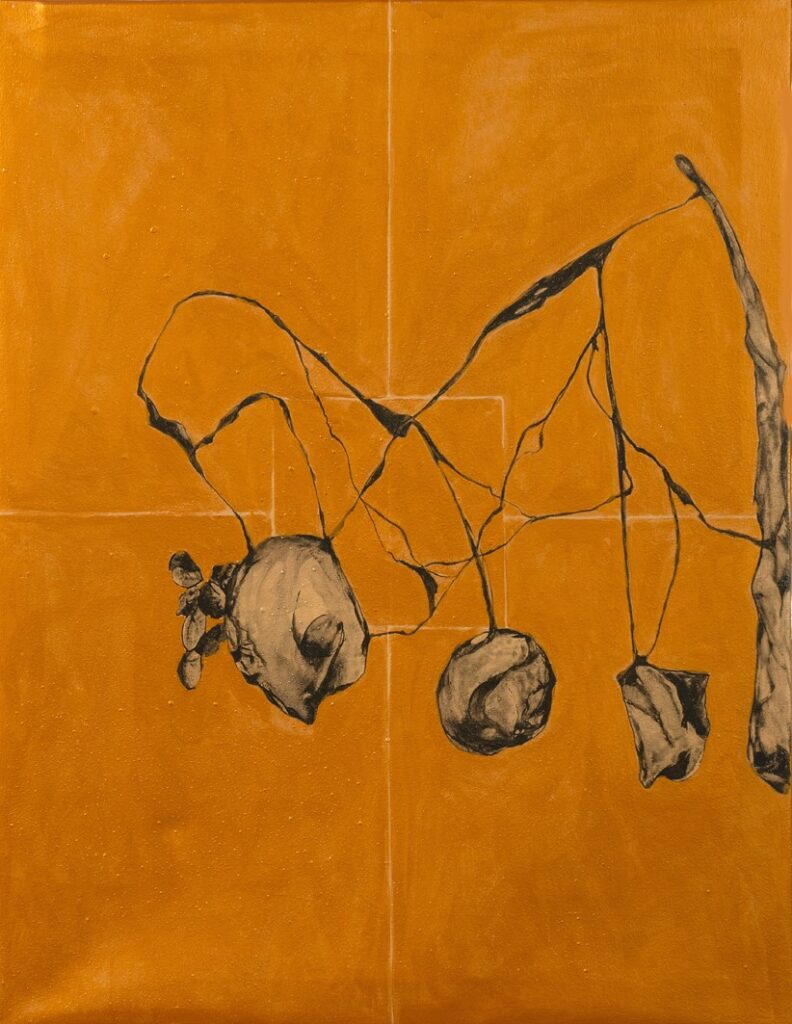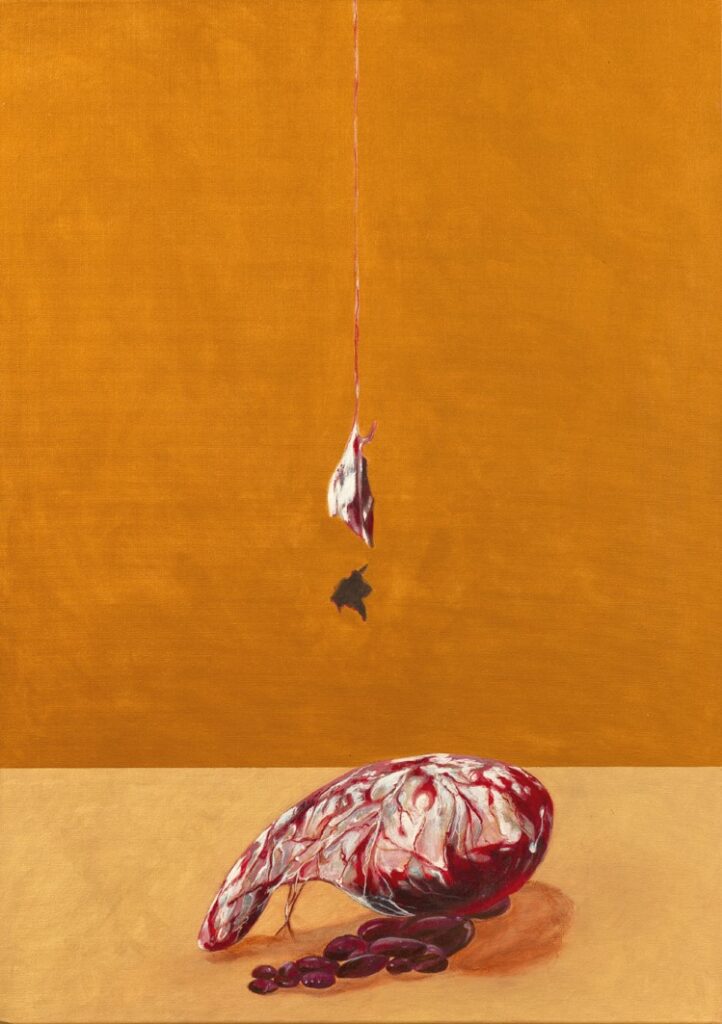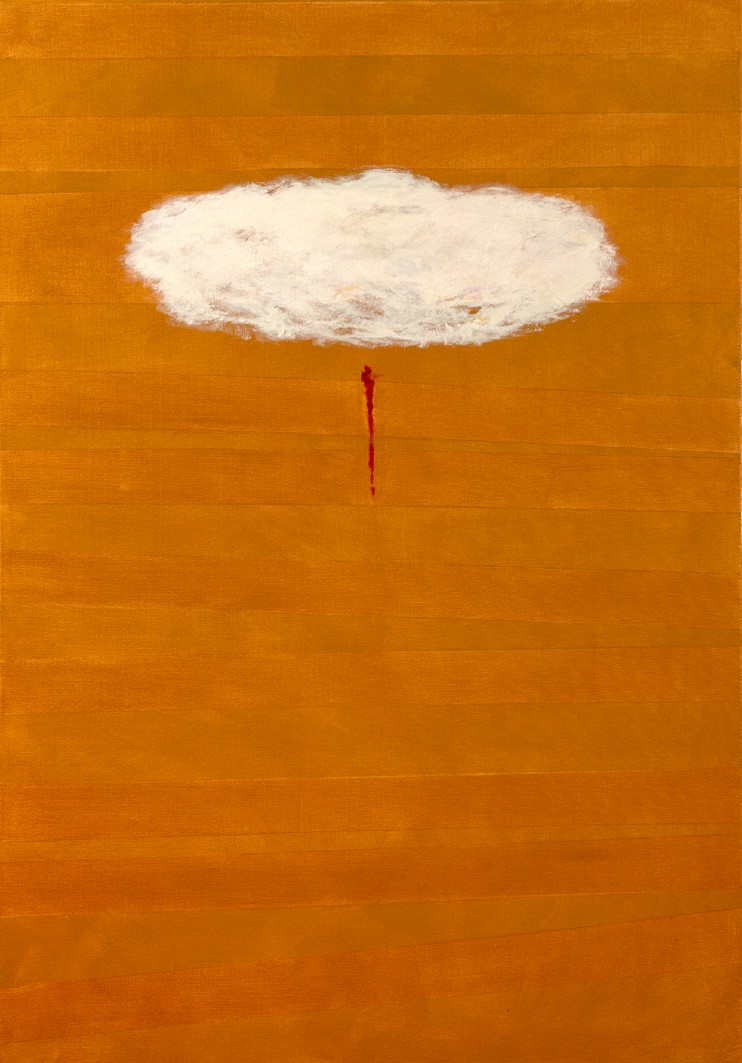statement
Tra l’Eterno e l’Effimero:
L’Arte di Stefano Boschetti tra Carne e Emozione
Morire, dormire.
Dormire, forse sognare.
William Shakespeare
Stefano Boschetti artista versatile e poliedrico, trasforma il tangibile e il passeggero in un dialogo poetico tra vita e morte, speranza e dolore, attraverso una straordinaria gamma di opere pittoriche e scultoree. Le sue creazioni, tra cui spiccano bistecche, pavimenti del macellaio, cuscini e volti di persone di colore, rappresentano uno straordinario viaggio nell’animo umano, un percorso che coniuga maestria tecnica e profonda riflessione filosofica.
L’opera di Boschetti si muove tra i confini dell’immaginario e del reale, tracciando una linea sottile tra l’eterno e il temporaneo. Attraverso le sue rappresentazioni di bistecche e organi scomposti, l’artista coglie l’essenza della vita e della morte, offrendo uno sguardo intimo sulla condizione umana. Questi soggetti, inizialmente crudi e materiali, si trasformano in simboli di un’esperienza condivisa, una riflessione profonda sulla vulnerabilità umana e la fugacità dell’essere.
L’arte di Boschetti va oltre la mera raffigurazione, intraprendendo un viaggio nell’intimo dei soggetti rappresentati. I volti di persone di colore ritratti con delicatezza e rispetto narrano storie di marginalizzazione e resilienza. Attraverso questi ritratti, Boschetti riconduce il pubblico a riflettere sulle disuguaglianze sociali e la lotta per l’uguaglianza, innescando un dialogo critico sulle questioni di giustizia e di inclusione. I pavimenti del macellaio, con la loro trama geometrica e la suggestione di una scena cruda, diventano metafore della dualità della realtà umana. Qui l’artista esplora il confine tra l’ordinario e il macabro, invitando gli osservatori a considerare l’inevitabile connessione tra la vita e la sua fine. Queste opere si stagliano come simboli dell’impermanenza (Anitya, nella dottrina canonica del buddhismo) e della fragilità dell’essere, suscitando riflessioni profonde sulla propria vita e il suo significato. Attraverso i cuscini, Boschetti evoca una sensazione di conforto e di ristoro, ma,, allo stesso tempo, traccia un confine tra la vita e ciò che la segue. Questi oggetti, luogo del riposo e dell’ultimo respiro, si trasformano in simboli dell’ultimo abbraccio terreno e dell’addio definitivo. La loro rappresentazione mette in luce la tensione tra la vita e la morte, tra la speranza e il destino, offrendo al pubblico uno spazio di contemplazione sulla natura fugace del tempo. L’approccio si basa su un profondo dialogo tra la sua arte e le influenze che lo hanno plasmato. L’eco delle tavole dorate del tardo medioevo e la semplicità della pittura zen si fondono nelle sue opere, creando un’atmosfera che trascende il tempo e lo spazio. Questo connubio di stili e di spirito si riflettono nella sua tecnica raffinata, in grado di catturare il fondamento dei soggetti rappresentati e di evocare emozioni universali. In definitiva, l’opera di Stefano Boschetti si erge come un ponte tra il concreto e il metafisico, il manifesto e il transitorio.
Attraverso le sue opere, l’artista invita il pubblico a esplorare le profondità dell’animo umano, riflettendo sulla vita, la morte, la speranza e la sofferenza. Boschetti ci ricorda che l’arte è un mezzo potente per esplorare la complessità dell’esistenza e per intraprendere un viaggio verso la comprensione di noi stessi e del mondo che ci circonda. In questa cornice, Boschetti emerge non solo come pittore, ma come artigiano del colore e dell’immagine, plasmando il suo materiale con maestria e sapienza, invitando tutti noi a esplorare le profondità dell’animo umano attraverso la sua arte.
Testo: Leonardo Rassouli-Baghi
To die, to sleep.
Sleeping, maybe dreaming.
William Shakespeare
Stefano Boschetti transforms the tangible and the passenger into a poetic dialogue between life and death, hope and pain, through an extraordinary range of paintings and sculptures. His creations, including steaks, butcher floors, pillows and faces of people of color, represent an extraordinary journey into the human soul, a path that combines technical mastery and deep philosophical reflection. Boschetti’s work moves between the boundaries of the imaginary and the real, drawing a thin line between the eternal and the temporary. Through his representations of steaks and broken organs, the artist grasps the essence of life and death, offering an intimate look at the human condition. These subjects, initially raw and material, are transformed into symbols of a shared experience, a deep reflection on human vulnerability and the fugacity of being. Boschetti’s art goes beyond mere representation, embarking on a journey into the depths of the subjects represented. The faces of black people portrayed with delicacy and respect tell stories of marginalization and resilience. Through these portraits, Boschetti leads the public to reflect on social inequalities and the struggle for equality, triggering a critical dialogue on issues of justice and inclusion. The butcher’s floors, with their geometric texture and the suggestion of a raw scene, become metaphors of the duality of human reality. Here the artist explores the boundary between the ordinary and the macabre, inviting observers to consider the inevitable connection between life and its end. These works stand out as symbols of impermanence (Anitya, in the canonical doctrine of Buddhism) and the fragility of being, arousing deep reflections on one’s own life and its meaning. Through the cushions, Boschetti evokes a feeling of comfort and refreshment, but, at the same time, draws a line between life and what follows it. These objects, the place of rest and the last breath, are transformed into symbols of the last earthly embrace and the final farewell. Their representation highlights the tension between life and death, between hope and destiny, offering the public a space for contemplation on the fleeting nature of time. The master’s approach is based on a deep dialogue between his art and the influences that shaped him. The echo of the golden tables of the late Middle Ages and the simplicity of Zen painting blend in his works, creating an atmosphere that transcends time and space. This combination of styles and spirit are reflected in his refined technique, able to capture the foundation of the subjects represented and evoke universal emotions. In conclusion, Stefano Boschetti’s work stands as a bridge between the concrete and the metaphysical, the manifest and the transitory. Through his works, the artist invites the public to explore the depths of the human soul, reflecting on life, death, hope and suffering. Boschetti reminds us that art is a powerful means to explore the complexity of existence and to undertake a journey towards understanding ourselves and the world around us. In this frame, Boschetti emerges not only as a painter, but as a craftsman of color and image, shaping his material with mastery and wisdom, inviting all of us to explore the depths of the human soul through his art.
Translate: Gabriel G. Barresi



Copyright © 2023 – Powered by LorenaCavallowebdesigner.it

